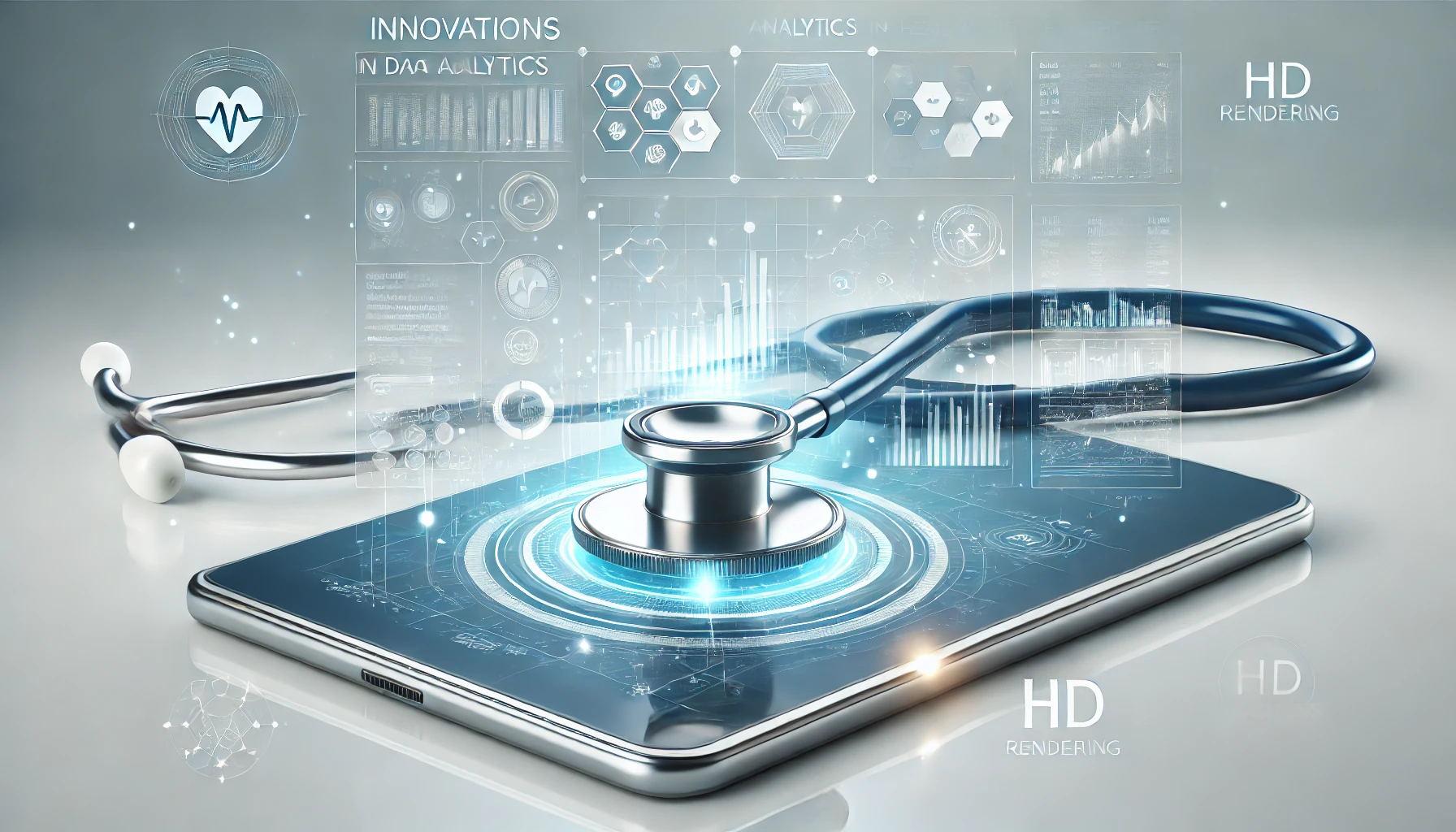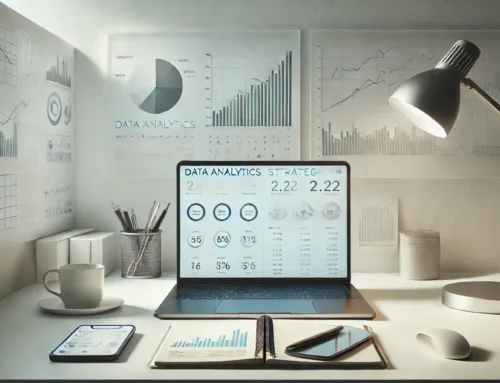Imagine a scenario where patient data analytics in healthcare identifies high-risk individuals before symptoms manifest, allowing for proactive interventions and personalized treatment plans. These 11 innovations in data analytics are reshaping healthcare delivery by leveraging advanced technologies to enhance patient care and outcomes. From predictive diagnostics to telemedicine support, each innovation plays a crucial role in improving healthcare services. But what specific impact do these innovations have on patient outcomes and healthcare efficiency? Explore how each innovation transforms the healthcare landscape and drives improved patient care.
Electronic Health Records
Electronic Health Records (EHRs) play a crucial role in modern healthcare systems, revolutionizing the way patient information is stored and accessed. Data integration within EHRs allows for a comprehensive view of a patient’s medical history, test results, medications, and other pertinent information in one centralized location. This consolidation of data streamlines healthcare processes, leading to more efficient and informed decision-making by healthcare professionals.
However, despite the numerous benefits EHRs offer, interoperability challenges remain a significant issue. The seamless exchange of information between different EHR systems is often hindered by incompatible formats, standards, and protocols. This lack of interoperability can lead to fragmented patient records, data silos, and potential errors in patient care.
Efforts are being made to address these interoperability challenges through the development of standardized protocols and technologies that enable different EHR systems to communicate effectively. Achieving interoperability is crucial for maximizing the potential of EHRs in improving patient outcomes and enhancing overall healthcare delivery.
Predictive Diagnostics
You are about to explore the realm of predictive diagnostics in healthcare, where data analytics plays a crucial role in early disease detection. By harnessing the power of predictive analytics, healthcare providers can tailor treatments to individuals, paving the way for precision medicine applications. Furthermore, predictive diagnostics enable healthcare professionals to project treatment outcomes with greater accuracy, leading to improved patient care and outcomes.
Early Disease Detection
The healthcare industry is continuously exploring innovative ways to improve patient outcomes, and one promising avenue is through early disease detection, also known as predictive diagnostics. Preventive care and health monitoring are crucial components in this approach. By utilizing data analytics, healthcare providers can proactively identify potential health issues before they escalate, allowing for timely intervention and treatment.
Early disease detection enables healthcare professionals to intervene at the earliest stages of a disease, increasing the likelihood of successful outcomes and reducing the overall burden on the healthcare system. Through the analysis of various data points such as patient history, genetic information, lifestyle factors, and real-time health monitoring data, predictive diagnostics can accurately predict the risk of developing certain conditions.
This proactive approach not only enhances patient care but also contributes to cost savings by preventing the progression of diseases to advanced stages that require more intensive and expensive treatments. By leveraging data analytics for early disease detection, healthcare providers can make informed decisions that prioritize prevention and early intervention, ultimately improving patient health outcomes.
Precision Medicine Applications
Exploring the realm of predictive diagnostics further, the application of precision medicine in healthcare stands out as a cutting-edge approach that tailors medical treatment to individual characteristics. Genetic profiling plays a pivotal role in precision medicine applications, enabling healthcare providers to understand a patient’s genetic makeup and predisposition to certain diseases. By analyzing an individual’s genetic profile, healthcare professionals can personalize treatment plans, leading to more effective and targeted interventions.
Furthermore, pharmacogenomics analysis, another essential aspect of precision medicine, focuses on how a patient’s genetic makeup influences their response to medications. This analysis helps healthcare providers determine the most suitable drugs and dosages for a particular patient, optimizing treatment outcomes and minimizing adverse reactions.
Incorporating genetic profiling and pharmacogenomics analysis into healthcare practices allows for a more personalized and precise approach to medicine. By leveraging these innovative techniques, healthcare providers can enhance patient care, improve treatment efficacy, and ultimately contribute to better health outcomes.
Treatment Outcome Projections
Treatment outcome projections, a key component of predictive diagnostics in healthcare, involve utilizing data analytics to forecast the potential results of medical interventions for individual patients. By analyzing vast amounts of patient data, healthcare providers can predict treatment effectiveness and improve prognosis accuracy. This innovative approach enables personalized treatment plans, leading to better patient outcomes and more efficient resource utilization.
- Enhanced Treatment Effectiveness: Data analytics can identify patterns in patient responses to specific treatments, helping healthcare professionals tailor interventions for better outcomes.
- Improved Prognosis Accuracy: By leveraging predictive analytics, healthcare providers can more accurately predict the likely progression of a disease and adjust treatment plans accordingly.
- Personalized Care Plans: Data-driven treatment outcome projections allow for the customization of care plans based on individual patient characteristics, optimizing treatment efficacy and patient satisfaction.
Patient Data Analysis
Patient data analysis plays a crucial role in shaping the future of healthcare delivery. By leveraging patient monitoring and health insights, healthcare providers can offer data-driven care that leads to personalized medicine. Through the analysis of patient data, healthcare professionals can track vital signs, symptoms, medical history, and treatment responses to gain a comprehensive understanding of individual health profiles. This allows for tailored treatment plans that consider each patient’s unique characteristics and needs, ultimately improving outcomes and patient satisfaction.
The insights derived from patient data analysis enable healthcare providers to predict potential health issues, intervene early, and monitor progress effectively. This proactive approach not only enhances the quality of care but also reduces healthcare costs by preventing complications and unnecessary treatments. Additionally, patient data analysis empowers patients to take an active role in managing their health by providing them with personalized recommendations and feedback based on their data.
Health Trend Analysis
You are about to explore the realm of Health Trend Analysis in healthcare data analytics. By uncovering disease patterns and trends, data analytics can assist in detecting outbreaks and predicting future healthcare needs. This analytical approach allows for the development of predictive healthcare models to better allocate resources and improve patient outcomes.
Disease Patterns Detection
Data Analytics plays a pivotal role in the healthcare sector by enabling the detection of disease patterns and conducting Health Trend Analysis. Through advanced data analytics techniques, healthcare providers can identify emerging disease patterns, predict outbreaks, and tailor personalized care strategies for patients. This proactive approach not only enhances patient outcomes but also contributes to the overall improvement of public health.
- Outbreak Prediction: Data analytics can analyze vast amounts of health data to detect early signs of potential disease outbreaks, allowing healthcare systems to take preventive measures promptly.
- Personalized Care: By leveraging data analytics, healthcare professionals can create personalized treatment plans based on individual patient data, leading to more effective and targeted interventions.
- Remote Monitoring and Patient Engagement: Data analytics tools enable remote monitoring of patients, promoting better engagement and adherence to treatment plans, ultimately improving health outcomes and reducing hospital readmissions.
In essence, disease patterns detection through data analytics empowers healthcare providers to make informed decisions, enhance patient care, and contribute to the early identification and management of health trends.
Predictive Healthcare Modeling
Detection of disease patterns through data analytics lays the foundation for predictive healthcare modeling, a critical component of Health Trend Analysis in the healthcare industry. By utilizing advanced algorithms and machine learning techniques, predictive healthcare modeling enables healthcare providers to forecast patient outcomes and anticipate healthcare costs more accurately.
Through the analysis of vast amounts of patient data, including demographics, medical history, and treatment outcomes, predictive models can identify potential health risks and determine the most effective interventions for individual patients. These models not only assist in early detection and prevention of diseases but also optimize treatment plans based on predicted outcomes.
Moreover, predictive healthcare modeling plays a significant role in cost reduction by identifying high-risk patients who may require intensive interventions, thus enabling healthcare providers to allocate resources more efficiently. By leveraging predictive analytics, healthcare organizations can proactively address patient needs, improve outcomes, and ultimately enhance the quality of care while reducing overall healthcare costs.
Medical Imaging Analysis
In the realm of medical imaging analysis, the integration of data analytics has revolutionized the way healthcare professionals interpret and diagnose conditions based on visual information obtained through various imaging techniques. AI algorithms and image recognition have played a pivotal role in enhancing the accuracy and efficiency of medical imaging analysis. Here are some key aspects to consider:
- Automation: AI algorithms can automate the process of analyzing medical images, reducing the time taken for diagnosis and enabling quicker decision-making.
- Precision: Image recognition technology aids in identifying subtle patterns or anomalies in medical images that might be overlooked by the human eye, leading to more precise diagnoses.
- Personalized Medicine: By analyzing medical images using data analytics, healthcare providers can tailor treatment plans based on individual patient characteristics, improving outcomes and patient care.
The marriage of data analytics with medical imaging analysis heralds a new era in healthcare, where technology enhances the capabilities of healthcare professionals to provide accurate and timely diagnoses.
Drug Development
The advancements in medical imaging analysis have demonstrated the significant impact of data analytics in improving diagnostic accuracy and efficiency within the healthcare industry. In drug development, data analytics plays a crucial role in optimizing clinical trials and identifying potential therapeutic targets.
Clinical trials are essential in evaluating the safety and efficacy of new drugs. Data analytics allows researchers to analyze vast amounts of data collected during these trials, helping to streamline processes, identify patient subgroups that respond best to treatment, and predict outcomes more accurately. By leveraging data analytics, researchers can make informed decisions about which drugs to advance to the next phase of development, ultimately speeding up the drug development timeline.
Moreover, data analytics aids in the identification of therapeutic targets – specific molecules or pathways involved in disease processes that can be targeted by drugs. By analyzing biological data, researchers can pinpoint potential targets for new drug development, leading to the discovery of more effective treatments for various conditions.
Personalized Treatment
Personalized treatment in healthcare is revolutionizing patient care by tailoring medical interventions to individual characteristics and needs. This approach leverages data analytics to analyze patient-specific information and develop customized treatment plans that result in better outcomes and experiences.
- Patient Engagement: Personalized treatment fosters active involvement from patients in their healthcare journey. By considering their preferences and values, patients are more likely to adhere to treatment plans, leading to improved health outcomes and satisfaction.
- Treatment Optimization: Data analytics enables healthcare providers to optimize treatment strategies based on individual patient data. By analyzing factors such as genetics, lifestyle, and response to previous treatments, healthcare professionals can tailor interventions to be more effective and reduce the likelihood of adverse effects.
- Cost-Efficiency: Personalized treatment can also lead to cost savings by minimizing trial and error in treatment selection. By identifying the most suitable interventions from the start, healthcare resources are utilized more efficiently, benefiting both patients and healthcare systems.
Healthcare Fraud Detection
To enhance the efficiency and integrity of healthcare systems, the focus shifts to the critical aspect of healthcare fraud detection. Fraudulent activity identification plays a pivotal role in safeguarding healthcare resources and maintaining trust within the system. Through advanced data analytics, healthcare organizations can implement robust risk assessment strategies to detect potential fraudulent behaviors and transactions. By leveraging anomaly detection algorithms, suspicious patterns can be flagged for further investigation, enabling swift action against fraudulent activities.
Cost-saving measures are another significant benefit of effective healthcare fraud detection. By identifying and preventing fraudulent claims, healthcare institutions can save substantial amounts of money that would otherwise be lost to deceitful practices. These cost savings can then be redirected towards improving patient care, enhancing medical services, and investing in innovative technologies.
Clinical Decision Support
With the rapid advancement of data analytics in healthcare, the focus now shifts towards enhancing clinical decision support systems. These systems play a crucial role in aiding healthcare professionals with real-time information and insights to improve patient care and outcomes. Here are some key aspects to consider:
- Workflow optimization: Clinical decision support systems help streamline and optimize the clinical workflow by providing timely alerts, reminders, and evidence-based guidelines to healthcare providers. This not only enhances efficiency but also ensures that patients receive the most appropriate care.
- Integration with electronic health records: Seamless integration of clinical decision support systems with electronic health records allows for quick access to patient data, medical history, and relevant information. This integration enhances the decision-making process and enables healthcare providers to make well-informed decisions.
- Personalized patient care: By analyzing vast amounts of patient data, clinical decision support systems can help tailor treatment plans and interventions to meet the specific needs of individual patients. This personalization of care can lead to improved patient outcomes and satisfaction.
Population Health Management
The evolution of data analytics in healthcare has paved the way for a strategic approach known as Population Health Management. This approach focuses on improving the health outcomes of a group of individuals by monitoring and improving the overall health status of the population. Key components of Population Health Management include risk stratification and care coordination.
Risk stratification plays a crucial role in Population Health Management by identifying individuals within a population who are at a higher risk of developing certain health conditions. By utilizing data analytics to stratify risks, healthcare providers can target interventions more effectively, leading to better health outcomes and cost savings.
Care coordination is another essential aspect of Population Health Management. It involves ensuring that patients receive the right care at the right time from the right healthcare providers. Data analytics can help streamline this process by providing insights into patient needs, preferences, and medical histories, facilitating seamless coordination among different healthcare providers. By implementing effective care coordination strategies, healthcare organizations can enhance the quality of care and patient satisfaction within a population.
Telemedicine Support
Periodically, healthcare systems are embracing telemedicine support as a pivotal component of their service delivery model. This shift towards telemedicine is revolutionizing the way patients interact with healthcare providers, offering convenience and efficiency.
- Remote monitoring: Through telemedicine support, healthcare providers can remotely monitor patients’ vital signs, symptoms, and overall health status. This allows for early detection of potential issues and timely interventions, improving patient outcomes.
- Virtual consultations: Telemedicine enables virtual consultations between patients and healthcare professionals, eliminating the need for in-person visits. This not only saves time for both parties but also expands access to healthcare services, particularly for individuals in remote areas.
- Enhanced accessibility: Telemedicine support enhances accessibility to healthcare by breaking down geographical barriers. Patients can receive medical advice, prescriptions, and follow-up care without the need to travel long distances, making healthcare more inclusive and convenient for all.
Frequently Asked Questions
How Can Data Analytics Improve Patient Engagement and Satisfaction in Healthcare?
To enhance patient engagement and satisfaction in healthcare, data analytics offers solutions like remote monitoring for real-time insights and personalized care. These innovations empower patients with proactive management, tailored interventions, and increased communication for better outcomes.
What Ethical Considerations Should Be Taken Into Account When Using Data Analytics in Healthcare?
When using data analytics in healthcare, you must prioritize ethical considerations. Privacy concerns are crucial, so ensure patient consent is obtained for data usage. Transparency in data handling builds trust and safeguards patient rights.
Are There Any Challenges in Integrating Data Analytics Into Existing Healthcare Systems?
So, you’re diving into integrating data analytics into healthcare systems? Implementation obstacles may arise due to system compatibility issues. Remember to prioritize data privacy and provide thorough staff training to navigate these challenges effectively.
How Can Data Analytics Help in Addressing Disparities in Healthcare Access and Outcomes?
You can leverage data analytics for equity analysis by identifying disparities in healthcare access. Through outcome prediction, data analytics can tailor interventions to specific populations, improving overall healthcare outcomes and ensuring equal access to quality care for all individuals.
What Role Does Data Security Play in the Implementation of Data Analytics in Healthcare?
Data security is paramount in healthcare data analytics. Addressing privacy concerns through robust cybersecurity measures ensures patient trust. Without proper safeguards, data breaches can compromise sensitive information, hindering the effectiveness of analytics and eroding confidence in the healthcare system.




